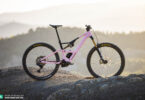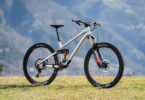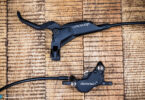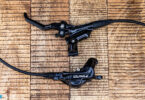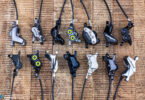Kona Precept 150 – Enduro on a Budget Review
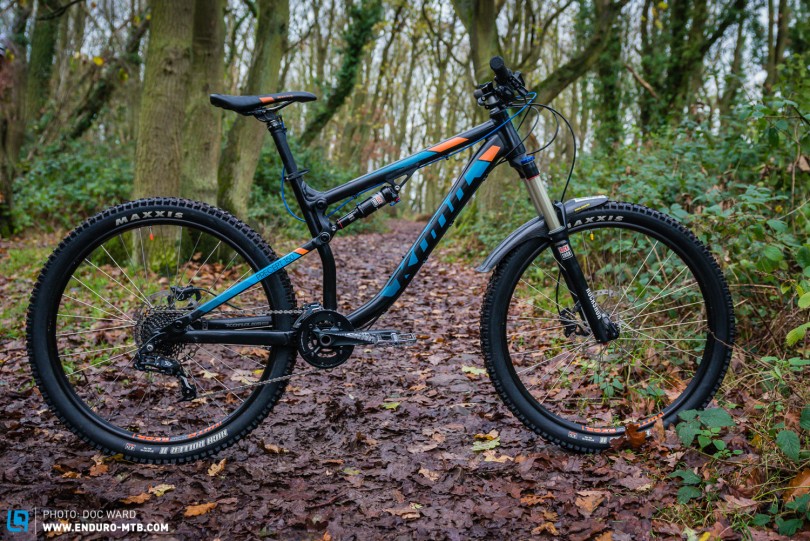
For 2016 Kona have decided to introduce a new line of affordable bikes that sit next to their Process lineup. The Precept 150 boasts a low standover, a long front end with short stem and a nice compact rear, mimicking the geometry of the trusted Process 153. Kona brag about this budget bike having the ability to cope with ‘heavy trail abuse’ so who better to run this bike for a few months as summer turned to winter than UK Editor Jim Buchanan! Could it take the abuse Jim had to offer or would it rattle and fold like a third world economy?
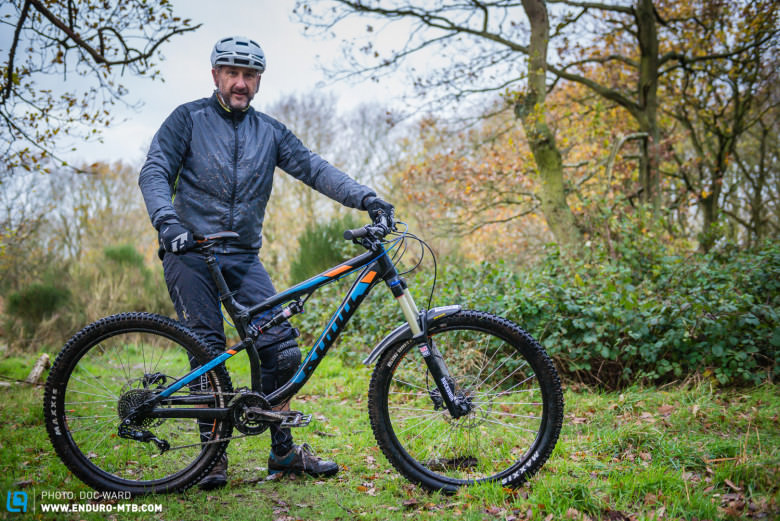
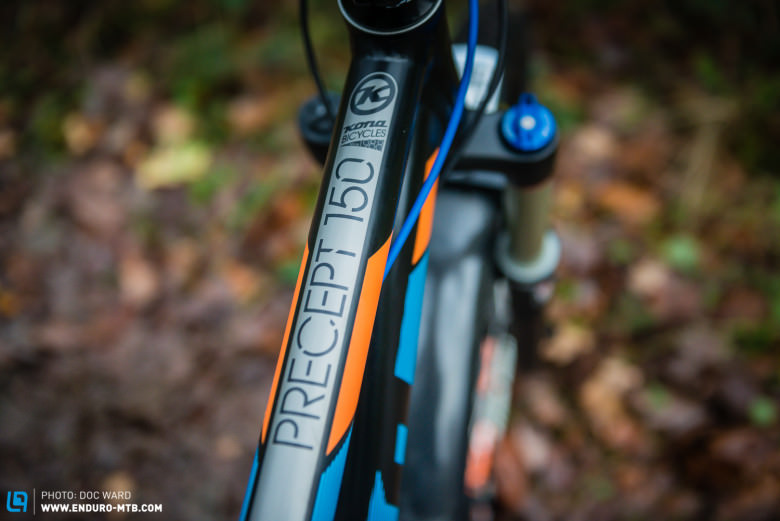
On first glances this new Precept 150 doesn’t exactly get the heart racing with desire, but once you start to look closer at the subtle lines of the blue and orange on black paint scheme then it becomes apparent Kona haven’t really cut any corners with this bike. They are offering pretty much all a rider would want to get into the game of enduro riding or even racing, without having to splash out heaps of cash on an all singing all dancing carbon bling machine. This bike screams strength and reliability on the first inspection, she is pretty weighty at 15.8kg (35lbs) on my scales, but with weight comes stability and strength. The strength is also something Kona are shouting about with their base model alloy frames, this bike coming in with a lifetime warranty for the original owner.
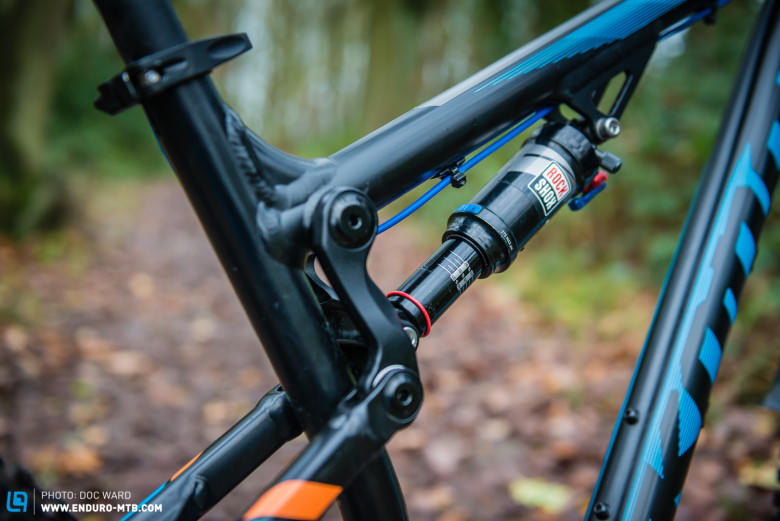
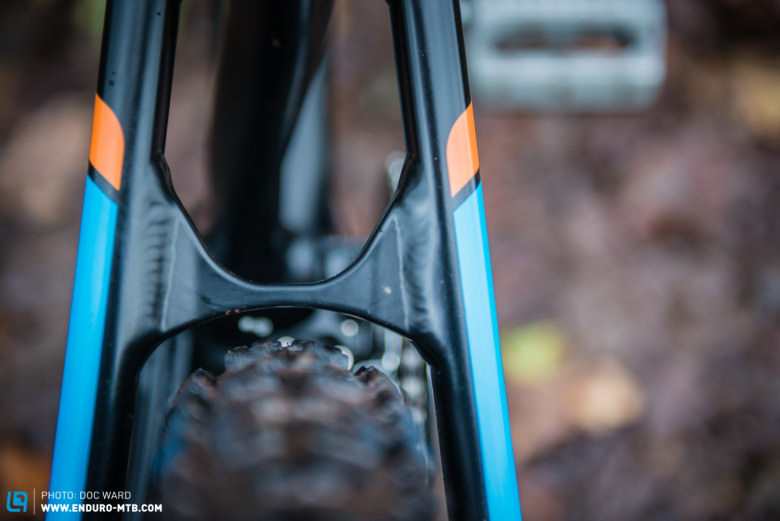
Geometry: Kona Precept 150
| Size | S | M | L | XL |
|---|---|---|---|---|
| Top Tube | 567 mm | 591 mm | 620 mm | 648 mm |
| Chainstays | 425 mm | 425 mm | 425 mm | 425 mm |
| Head angle | 66.5° | 66.5° | 66.5° | 66.5° |
| Seat tube angle | 76.0° | 75.0° | 75.0° | 75.0° |
| BB drop | 10 mm | 10 mm | 10 mm | 10 mm |
| Seat tube | 395 mm | 415 mm | 440 mm | 465 mm |
| Reach | 416 mm | 435 mm | 460 mm | 485 mm |
| Stack | 487 mm | 596 mm | 605 mm | 610 mm |
Specification: Kona Precept 150
Componentry is basically enough to do the job and then some, you’ll see no XTR here, but the basic 203 mm Shimano un-badged brakes have bags of stopping power like their high-end cousins, just sporting a bit more weight. The drivetrain comes in the form of 2×10 SRAM with an 11/36 cassette and the twin rings are protected by a nice substantial bash-ring, sat on a set of SRAM S1000 cranks. WTB take care of the wheel department, the rear being 142×12 and the bar, stem, grips and saddle are Kona’s own brand. Cables are routed through nice and simple external guides down the front of the frame, keeping things simple there and the dropper is a KS 100 mm external cable type. All in all the build is what you would expect for a base model hard hitting enduro bike, so it was time to put it to the test.
- Fork: RockShox Sektor Solo Air 150 mm
- Rear Shock: RockShox Monarch RT
- Drivetrain: SRAM X7
- Brakes: Shimano
- Seatpost: KS Eten R
- Tyres: Maxxis High Roller II 2.40
- Wheelsize: 27.5″
- Hubs: Shimano Deore
- Rims: WTB SX25
- Price: € 2,299
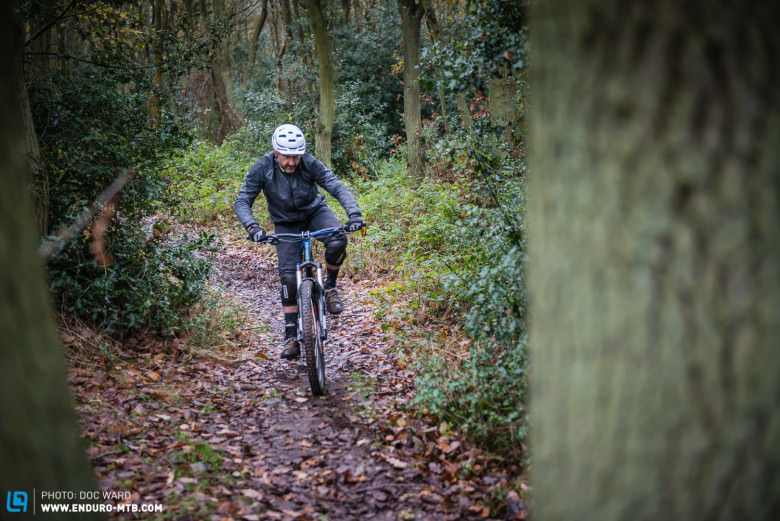
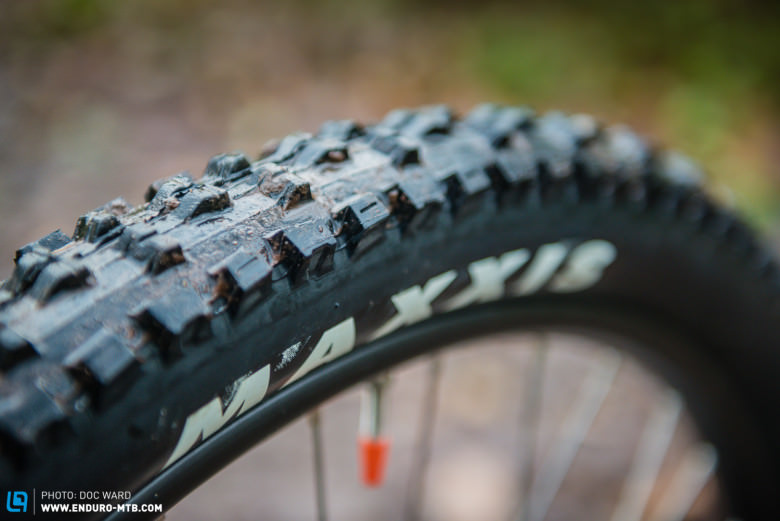
Initial Impression
In the car park test the SIP suspension platform offers plush smooth travel when the RockShox Monarch RT is in the open position and it’s great to see a shock actually doing a really good job of stiffening the travel right up when set to climb mode. With the frame being relatively long and the shock and Sector Solo air forks offering 150 mm each end, things feel very well balanced from the off. The initial first thought once upon the Precept and steadily riding the trails is of utter confidence and stability, it really did offer the feel of a bike twice its price! The sizing seems great with this being a large and me being 177cm tall. The reach seems spot on with the bike seeming one of the most comfortable I have ridden in a long time when it comes to long days in the saddle.
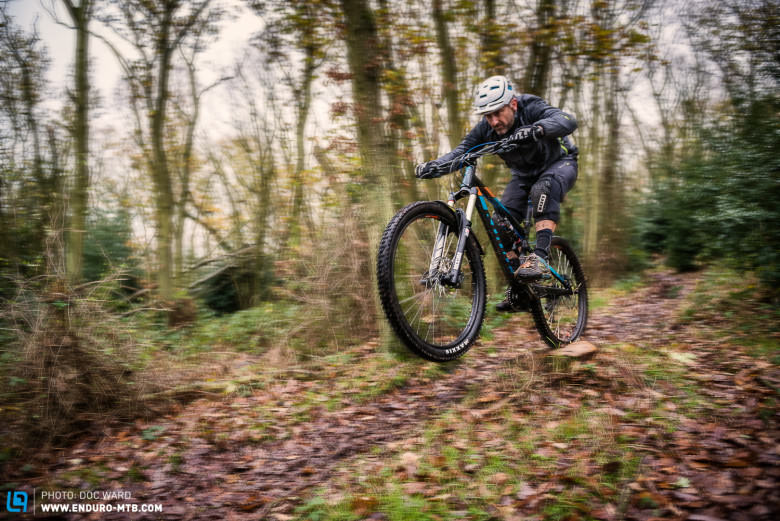
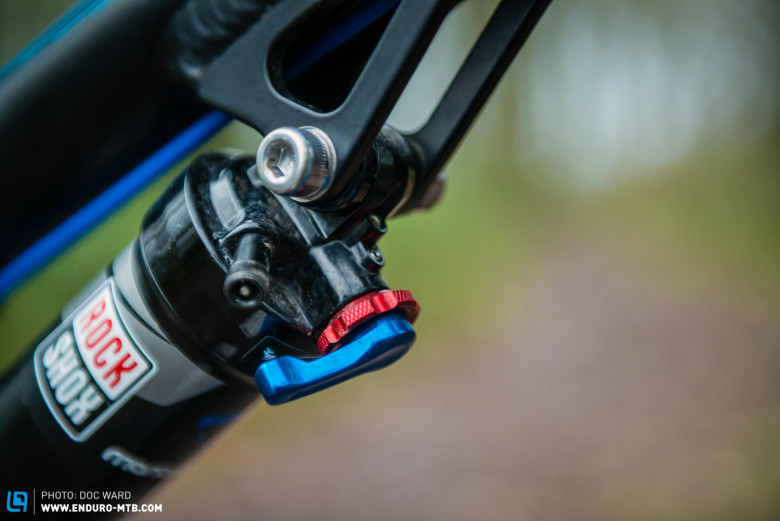
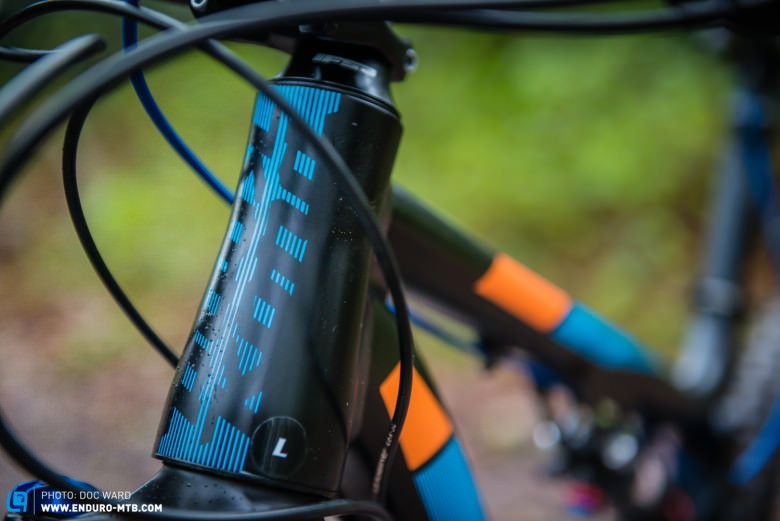
The Kona Precept 150 on the trail
Out on the trail the Monarch shock and Sector fork soak up the small bumps with surprising efficiency, the Sectors may sound like an asthmatic granddad as they extend and retract, but they do work well on the small to mid-size stutter bumps, as does the Monarch RL. As stated earlier, the bike does come packing a few pounds in weight, but when out riding with the fantastic balance of the bike, this really is not noticeable one bit. Point the bike upward, switch to climb on the shock and shift down to granny ring and it’s quite remarkable just what gradients can be tackled. We all get so used to busting a gut up the climbs with 1×11 that when you go back to 2×10 you remember just how steep a climb can be tackled with so much more ease, as your legs spin faster than a politician’s lies! The stem is short at 35 mm, but with the nice long 620 mm top tube, the front wheel remains planted as the rear wheel grips, aided by the fantastic Maxxis High Roller II tyres.
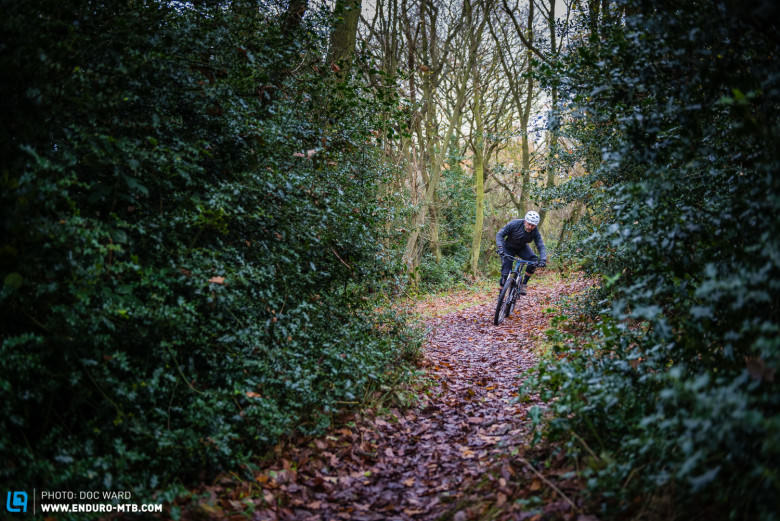
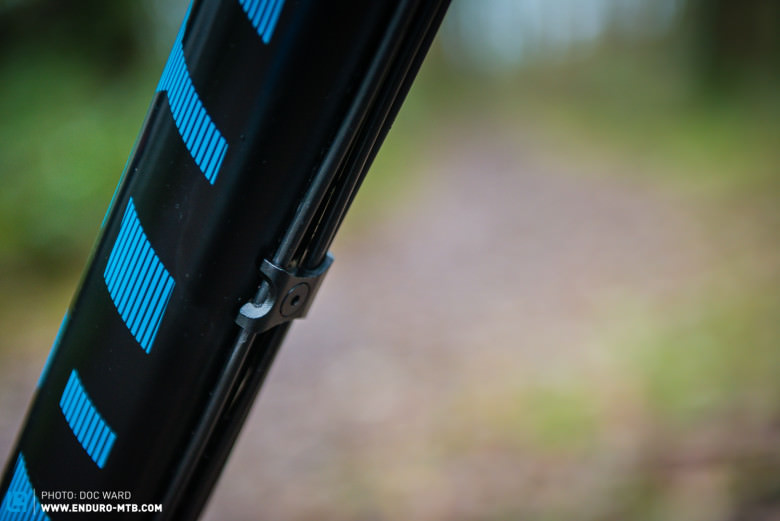
Limitations
Point it downhill, shock in open position, back to the big ring up front then drop the seat, or at least try; ahh, here we have our first problem! The dropper fitted is that of the very successful KS, but unfortunately, it’s their entry-level Eten R 100 mm version. The one fitted to this bike was very slow in its downward and upward action, needing about 2 seconds to retract and even more to extend; it’s amazing how much you realize you need a fast dropper when faced with a slow one. Also, with the bike having a good standover height at 725 mm a mere 100 mm of drop really doesn’t cut it on the steeper downhills, with the seat still feeling like it was in the way, it needed extra lowering with the QR seat clamp; basically, a 100 mm dropper is only ok for kids and very short people and that’s that!
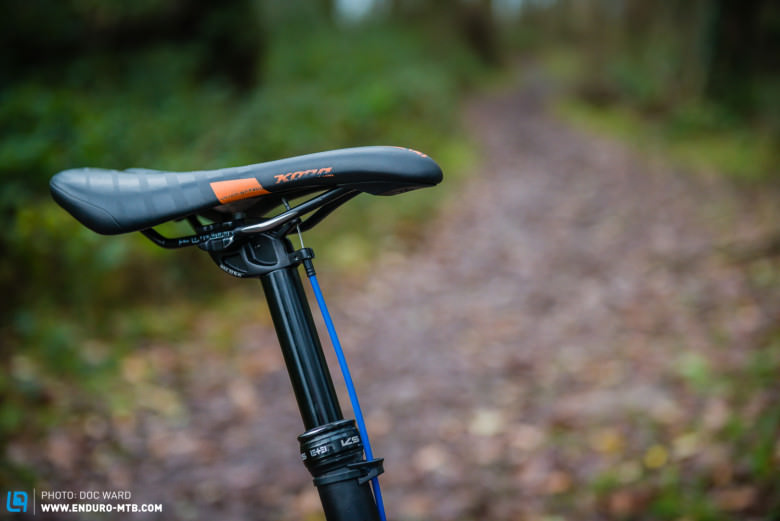
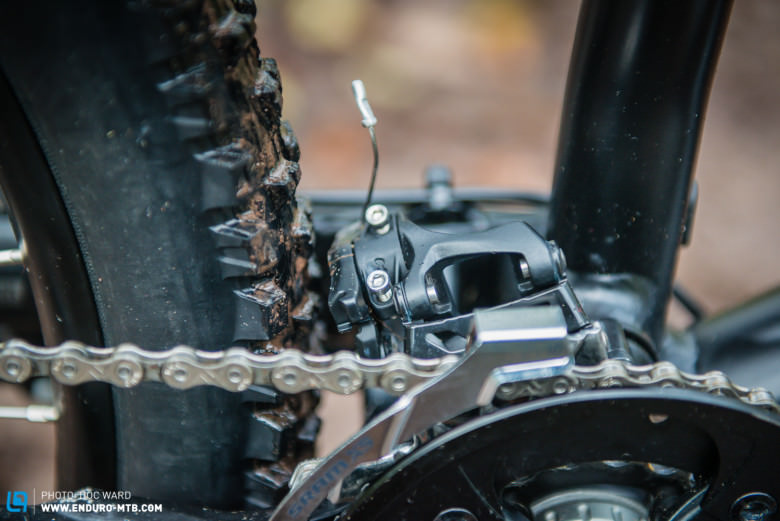
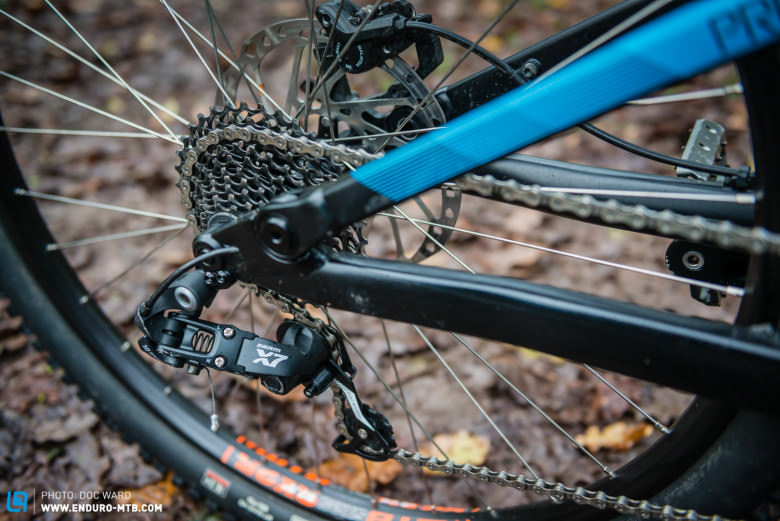
On the downhills
Once rolling on the faster stuff this bike handles really well at high speed, corners can be hit with confidence as the mix of High Roller IIs, short stem, long top tube and the central stability seems to throw the bike out of turns fully composed and begging for higher speed. Only when pushing real hard through the roughest of ruts do you notice the narrowness of the Sector forks legs, as things start to go a bit twisty when the bars struggle to keep up with the wheels’ violent actions; off the bike with the front wheels between your legs and forcing the bars from left to right this is quite noticeable. Although saying that, we have to remember this is an entry-level bike and we are not going to get Fox 36’s for the base price! The shock, however, performed way above expectations and kept the back end planted and secure, even in the nastiest of braking bumps.
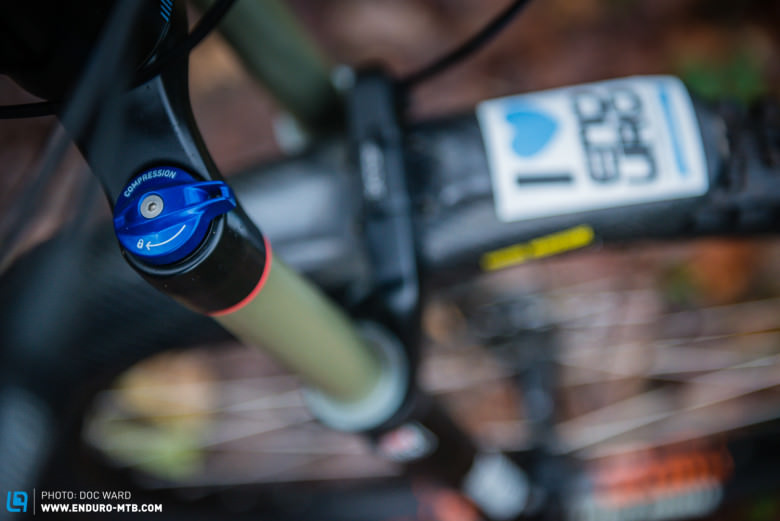
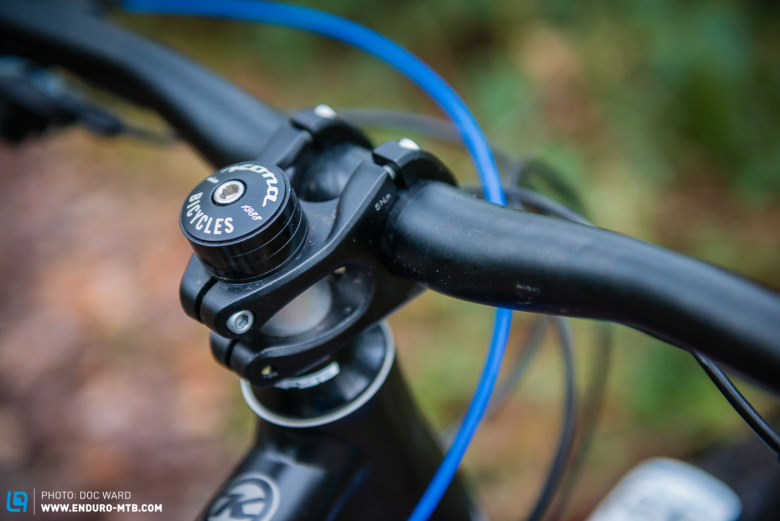
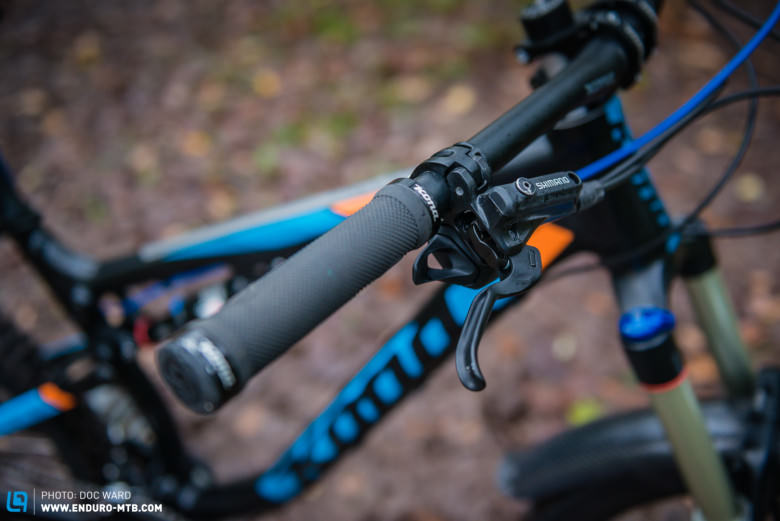
Suggested upgrades
If I was to own one of these bikes the first upgrade before even being ridden would be some paint protection around the rear chainstays, with nothing to stop the chain slapping the stays, the rattle was apparent and within a couple of rides paint was being chipped off to reveal the bare alloy underneath; I’m surprised Kona didn’t think of this really. The dropper would have to be replaced with a 125 or 150 mm usable version, plus the twin ring with front mech would be ditched, the mech is just so close to the rear tyre that it acts as a special crud collector and would soon be destroyed after needing regular cable changes. The forks would probably be my first big upgrade, then that would be it, it has all the components necessary to do the job well.
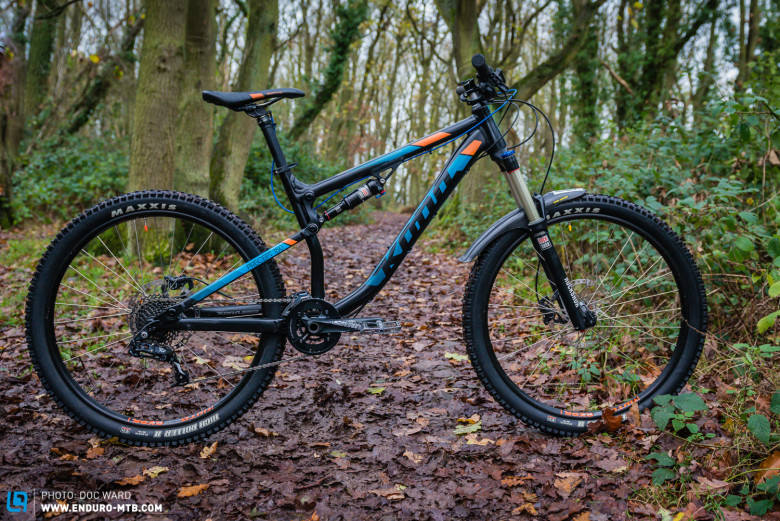
Conclusion
Overall I’m very happy with the Precept’s performance for every day riding. I think if you were after an entry level enduro bike for smashing through the trails you wouldn’t go far wrong with one of these bikes. As for Kona claiming they have a low priced bike for heavy trail abuse, well I think they have nearly hit the nail on the head!
For more infos on the Precept 150, visit the Kona Website
Words: Jim Buchanan Photos: Doc Ward
Did you enjoy this article? If so, we would be stoked if you decide to support us with a monthly contribution. By becoming a supporter of ENDURO, you will help secure a sustainable future for high-quality mountain bike journalism. Click here to learn more.




